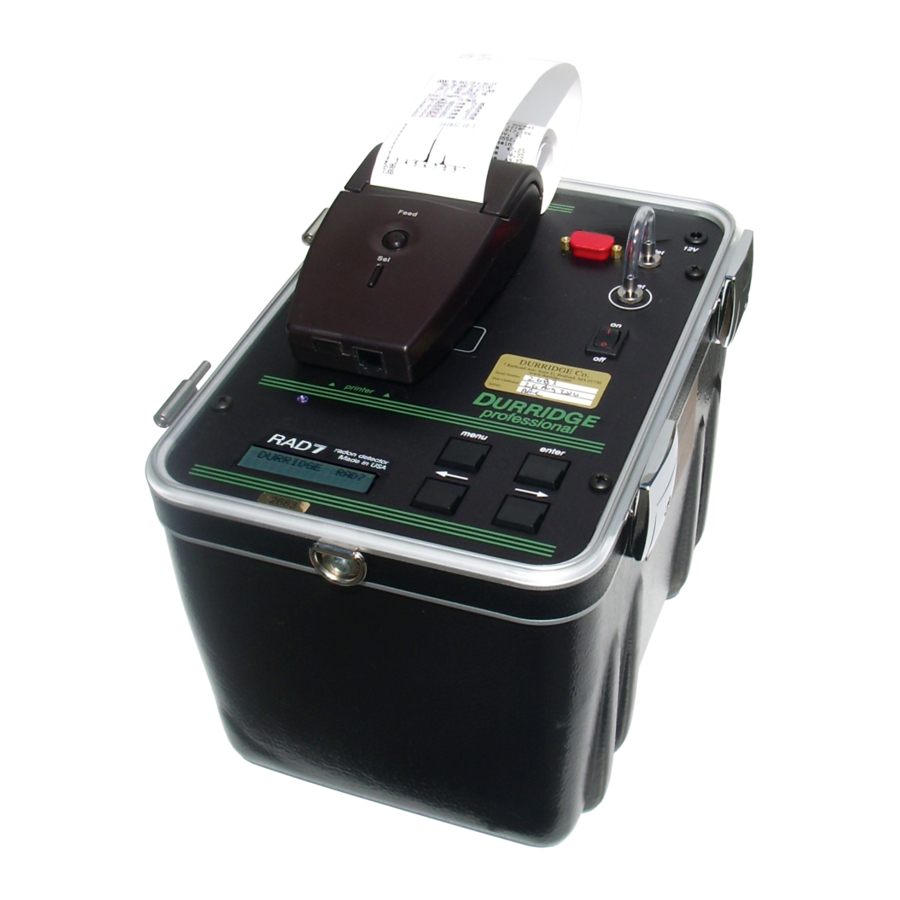- ページ 10
ラボラトリー機器 DURRIDGE RAD7のPDF ユーザーマニュアルをオンラインで閲覧またはダウンロードできます。DURRIDGE RAD7 15 ページ。 Passive, slow response radon in water accessory
DURRIDGE RAD7 にも: ブルートゥース接続マニュアル (4 ページ), 接続マニュアル (4 ページ), ユーザーマニュアル (7 ページ)

3.2 Data Conversion Formulas
3.2.1 Fritz Weigel Formula
The RAD7 gives an accurate reading of the radon
concentration in the closed air loop. With the Water
Probe, this air reaches equilibrium with the
surrounding water. To convert the air concentration
to water concentration, the air concentration must be
multiplied by the partition coefficient, which is given
by the Fritz Weigel equation (Weigel, 1978):
a = 0.105 + 0.405 * exp(-0.0502*T)
where T is the temperature in degrees Celsius.
At 10 degrees Celsius, a is around 0.35, giving, at
equilibrium, a three-to-one ratio of radon in air to
water. The Fritz Weigel formula is applied
automatically in CAPTURE when the Water Type is
set to Fresh Water in the Run Parameters Window, as
shown in Fig. 3, below.
Section 3
Data
Fig. 3 The CAPTURE Run Parameters Window
3.2.2 Schubert Et. Al. Formula
If the Water Type is set to Saline Water in
CAPTURE's Run Parameters Window, the radon in
water concentration is calculated using the Schubert
et al. formula, which is a function of both water
temperature and salinity. (See Schubert et. al., 2012.)
The Run Parameters Window provides a field for
specifying the salinity of the water, in parts per
thousand. Note that this formula is suitable for water
samples with any degree of salinity, including zero.
When the salinity value is set to zero, it produces
results that are nearly identical to those produced by
the Fritz Weigel formula.
10
